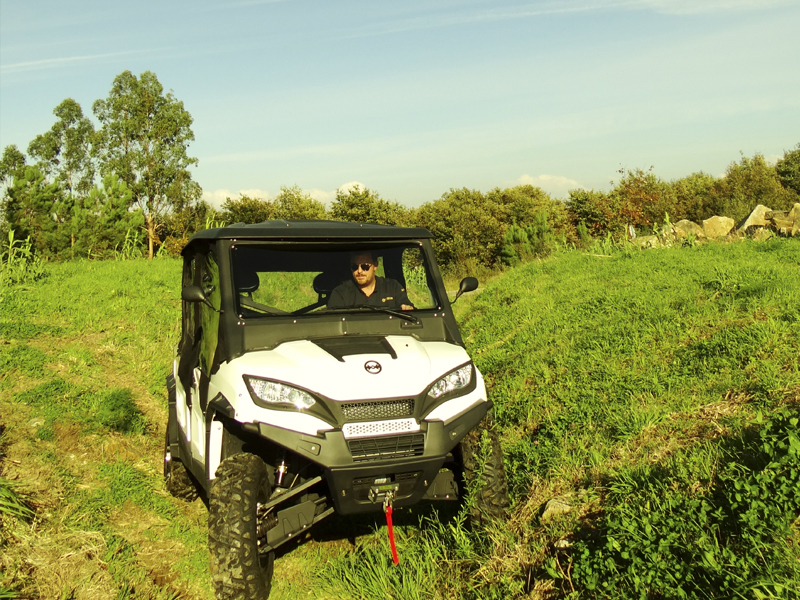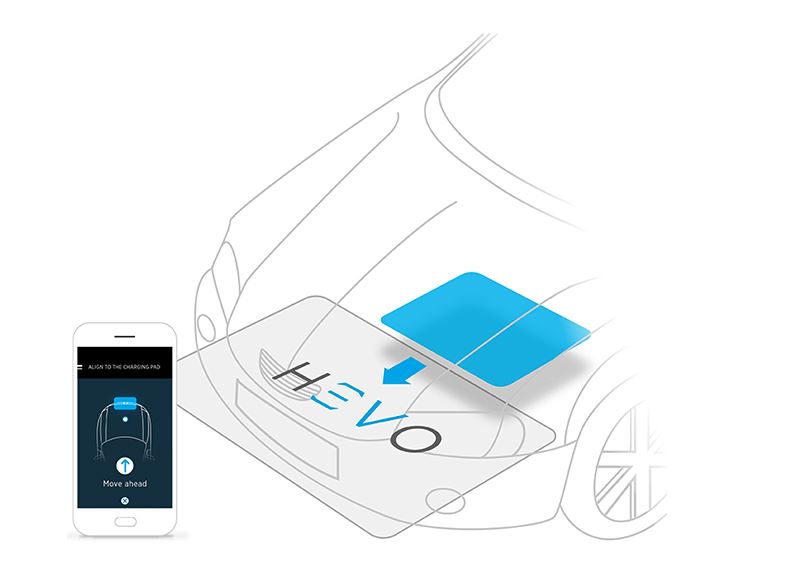The startups getting connected in the automotive sector
The once-humble automobile, invented in the latter part of the 19th century, heralded the end of horse power as a means of getting from A to B, and ushered in the age of the internal combustion engine. However, consumer options were pretty limited in those early days, with Henry Ford famously marketing his Model T (pictured left) by stating that: “You can have any colour, as long as it’s black.”
We’ve come a long way since then – to the point where technology is so integral to the operation and options within a car, they are now less like cars and more like sensors that you sit in.
The burgeoning market of the connected car is expected to be worth around €141bn by 2020 and startups are expected to grab their slice of the pie as pioneering companies create innovations in wireless electric charging, hacker protected cars, smart driving and zero emission transport.
Here we look at four such companies who are already making a significant impact in the value chain:
Argus
It’s no secret that the more a car gets connected the more vulnerable it becomes, and there have already been several high profile instances of car hacking. Almost any digitally connected device in a car could become an entry point for hackers and, crucially, there is no silver bullet that can protect a car against all possible hacks.
Based in Israel, Argus offers assistance to car manufacturers, their Tier 1 suppliers and aftermarket connectivity providers to protect connected cars and commercial vehicles from car hacking. Founded in 2013 by cyber security experts, Argus’ solutions combine security methods and computer networking know-how with deep understanding of automotive best practices. Argus’ R&D is based in Tel-Aviv, Israel, with offices in Michigan, Silicon Valley, Stuttgart and Tokyo.
The company offer a range of solution suites that offer multi-layered protection from car hacking. These are:
- Connectivity protection: This defends the infotainment or telematics units by preventing malware installation, detecting operating system (OS) anomalies, isolating suspicious applications and stopping attacks spreading to the in-vehicle network. In addition, this suite secures the two-way communication channel with the outside world. Argus Connectivity Protection operates across platforms (Linux/QNX/Android) to protect the car’s most vulnerable attack surfaces.
- In-vehicle network protection: This suite provides in-vehicle network-wide security by detecting attacks, suspicious activity and changes in standard in-vehicle network behaviour. Deployed centrally, Argus In-Vehicle Network Protection examines entire network communication and stops attacks advancing in the network. It supports an array of network protocols – CAN and CAN-FD, FlexRay, Ethernet (with SOME/IP, DoIP etc).
- ECU protection: This reinforces select Electronic Control Units (ECUs), such as brakes, Advanced Driver Assistance Systems (ADAS), door control units or any other units deemed critical, from attacks originating inside and outside of the ECU. Located on the ECU, this suite detects and prevents incoming attacks as well as neutralises malware resulting from supply chain attacks or other attack vectors.
- Lifespan protection: This future-proofs the fleet with an additional layer of protection by collecting and analysing data from Argus in-vehicle solutions and other sources. Operating from the cloud or integrated in a security operations centre (SOC), this suite provides OEMs and fleet managers with situational awareness of fleet cyber health on an intuitive dashboard. Argus Lifespan Protection also generates insights on new attacks and trends from big data analytics of OEM and fleet data, and provides the tools to take pre-emptive action.
- After market protection: This suite delivers telematics technology providers, connectivity service providers, fleet managers, insurance companies and dongle manufacturers solutions that protect cars from attacks that exploit their technologies and services. Argus Aftermarket Protection provides in-vehicle network protection and dongle protection to retro-fit cars and commercial vehicles on the road.
Botcar
Spanish company Botcar allows users to connect their vehicle to their smartphone. The combination of an adapter and the Botcar app turns a vehicle into a smart object capable of predicting and alerting the user of mechanical breakdowns, help to find the cheapest and closest petrol station or show how to improve driving skills for efficient and safe driving. It can also remember where the car is parked.
The adapter: The Botcar adapter is an advanced technology hardware device that connects directly to a vehicle, and analyses dozens of parameters per second of both the mechanical behaviour of the vehicle and the driver. It is able to detect mechanical breakdowns and transfer all that information to a smartphone.
The app: The Botcar app is designed to help control the expense and mechanical health of a vehicle, while allowing the driver to take control of all locations and improve driving style. The app automatically connects to the Botcar adapter as soon as the user gets closer to the vehicle. From that moment it begins to monitor all the parameters of the vehicle, such as information on sensors, geographic location or activity behind the wheel.
Hevo
The Netherlands-based company offers wireless charging for electric vehicles and aims to provide electric vehicle owners with the ultimate charging experience – the ability to park and power up – while eliminating the hazards and inconvenience that comes with plug-in charging. The Hevo system is based around three core components:
1. App & Cloud Sync
By seamlessly syncing via the Cloud, the Hevo app provides communication between the hardware components and serves as the sole interface with the end user.
2. Power Station
Surface mounted or embedded in the ground, the Power Station and inverter transmits wireless power to the wireless receiver.
3. Wireless Receiver
Easily mounted to any electric vehicle, the receiver captures the wireless power and transmits it to the battery via the rectifier.
Above: the Hevo charging system
How it works
Step 1. Station reservation: Select a nearby station and choose the best route for navigation. Available stations are marked on the Hevo app in green.
Step 2. Vehicle alignment: As the driver gets within 25ft of the selected Power Station, the app automatically displays visual and audible directions to assist the driver with vehicle alignment. This feature can also be interfaced with autonomous driving technology.
Step 3. Start charging: Charging can be done at the touch of a button. Users can remotely start and stop charging anytime, anywhere, while accessing real time charging data via the app. Auto-start functionality can also be selected through the app settings.
Step 4. Charging complete: The app informs you when the charging process is complete. Drivers can use the app to wirelessly pay their bill, monitor receipts and evaluate charging statistics on the move.
Account holders can sign into MyHEVO to access their personalised dashboard and get the data they need to enhance their charging experience.
Little
Also based in Spain, Little Electric Cars manufacture electric off-road cars that provide individuals and businesses with vehicles that are 100% electric and produce zero CO2 emissions. Several models are available.
The Little 4 has high power batteries, which offer a range of 100km, with a maximum speed of 45kph, which means an approximate cost per 100km of €1.00, which is the cost of recharging the batteries. The company estimate that 75% of trips in Little 4 are within a seven kilometre radius, so it is more than enough autonomy for daily use.
EBOX2 has a variety of applications within the service industry including maintenance, gardens, parks and protected areas. Its rear part with tilting box or closed box, features a payload capacity of approximately 200kg in the 2×2 version and 500kg in the 4×4. For this reason and unlike Little 4, Ebox cannot incorporate four passengers.
Users can choose between AGM batteries and Lithium batteries. This difference influences the range of the vehicle - 40km with AGM batteries or up to 80km for Lithium. Similar to the Little 4, the EBOX2 is a quadricyle so it can be driven by 16 year olds.
The EBOX6 is a 4x4 six seated vehicle with two 4kW engines, and has a range of up to 80-90km with Lithium batteries or 50km with AGM batteries. The EBOX9 includes the same features as the EBOX6 but incorporates nine seats and is authorised to drive on public roads.

The PANTER (above) is an all-terrain vehicle that is available with lead or Lithium batteries. Range is 40km in lead and 80-100km in Lithium. It features an 8kW motor or, for rougher terrain, a 15kW version.
The connected car market is expected to be extremely disruptive over the next five years or so and will present a wealth of opportunities for startups. With this in mind IMPACT Accelerator has launched the first call of IMPACT Connected Car, a new programme led by FundingBox and ISDI which sets out to support, connect and fund companies that offer to disrupt the emerging market of the connected car.
With a fund of €2.1m, IMPACT Connected Car will help SMEs (small to medium enterprises) and startups to capture this business opportunity. It will identify companies that will lead the creation of new value link-chains in the Connected Car OpenSpace, with vehicle, infrastructure and device interactions as well as consumer and business services.












